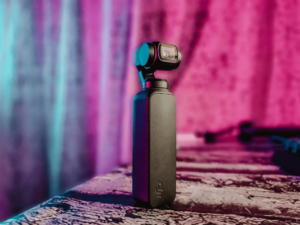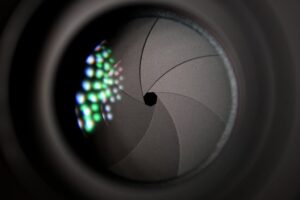LED walls are large screens with light-emitting diodes that can display video and other visual materials like computer monitors. However, with no space between the cabinets and modules that make up the system, it occurs to the eye as a large, bright wall, permitting you to cover it with videos and seamlessly digitize any room. The phrase “led wall” is typically used in scenography studios, including television, virtual production, or anywhere the screen is captured by trained cameras. However, the term is currently used for all applications, such as indoor and outdoor LED displays or screens.

What is a LED wall Display?
An LED Wall Display is the most recent technology used in LEDs. The “light-emitting diode,” or LED, transforms electrical energy into visible light. They are novel because each pixel on an LED display is composed of a mix of red, green, and blue LEDs. As a result, the diodes may synthesize billions of possible colors using light intensities, representing true-to-life color. Previously, LCD wall screens with LED or fluorescent backlights were the most popular solution. LED displays have superior light intensity and better viewing angles than other technologies, including LCDs, and are more energy-efficient because of their structure. Traditional LED Displays and all-in-one LED Displays are the two available options presently. Let’s dive into the technology of LED walls, revolutionizing visual displays.
How are LED Wall Displays useful?
There are many different ways in which an LED wall display can be used. Schools and universities can set up displays in the entrance halls or auditoriums to make announcements and distribute crucial information during an assembly or showcase presentations. LED wall displays can be used in museums, festivals, and events. These technologies help to upgrade modern workplaces.
Seamless viewing
The smooth viewing experience on a bigger screen is one of the main advantages of LED wall displays, both traditional and all-in-one. These new, high-quality displays will feature almost frameless edges, no picture grids between the huge display, and SMD or Chip on Board (COB) LED technology. This leads LEDs to increased luminous efficiency while also enabling wider viewing angles. Also, they are more dependable because of dust- and moisture-proof screens.
Clear display
LED technology offers a compact profile, outstanding contrast ratios, a wide color gamut, and a small pixel pitch (the distance between adjacent pixels) to bring an impressive experience to the viewers. The most excellent LED alternatives may produce an astounding 0.93 mm fine pixel pitch, resulting in exceptional pixel density and 4K resolution for flawless image quality, regardless of the viewing distance. A 2.5 mm pixel pitch is perfect.
Easy to install and maintain
The advantage of an all-in-one LED wall display is that it is easily installed and maintained. The most recent version of LED has a modular design, which enables quick installation timeframes, frontside maintenance, and hot swapping of damaged modules without changing or turning off the entire display. In addition, the power supply, control, display, and image stitching systems for all-in-one screens will all be integrated. These wide LED screens also provide quick startup times and are incredibly user-friendly.
Wireless
Using screen sharing and screen casting technology over a Wi-Fi network is possible with an all-in-one LED wall display, opening up possibilities for wireless content sharing. This can be extremely helpful for collaborative creative processes, reporting, conferencing, and other similar group tasks.
How does an LED Wall work?
An LED Wall is a bigger screen on which images are displayed, communicated by a computer, and processed by a control unit. It is made up of many square or rectangular LED modules that have been constructed and set side by side. LED Walls are primarily used in the advertising sector. They can be fixed in locations such as public spaces, airports, train stations, or on the roofs of buildings or with educational goals for drivers along the most important thoroughfares. Still, they are also used during concerts and music festivals or to broadcast significant sporting events in outdoor venues. Clubs and multiplex theaters also increasingly purchase large LED screens to draw audiences. Big displays are also used in stadiums, arenas, swimming pools, and sporting venues, primarily for displaying a competition’s score or times. The main benefit of an LED video wall is its powerful visual impact, which may attract attention from a great distance away from its location.

What is the LED wall price?
An LED wall panel with an average dimension of 500 by 500 mm typically costs between $1,000 and $3,000 per panel. Depending on how sophisticated a system is intended, processor and software expenses can also differ. However, the price varies depending on the below factors:
- Installation method
- Indoor/outdoor application
- Pixel density
- Design
- Video processing requirements
- Display size
How to set up a LED Wall Display?
An LED wall can be set up however simply or intricately you choose. In essence, all that is needed is to choose the number of monitors or screens you want and the size of your display, purchase the video wall components, and set them up. Remember the below details while installing an LED Wall display for an easy setup:
- Desired features
- Size and shape of the LED Wall Display
- Content type to be displayed
- The types of systems and screens that are used
Is the LED a single-wall screen?
An LED wall is a collection of screens frequently connected in a chain to form a unified show. This is more affordable and offers the customer more versatility than a large screen.
What are the types of LED walls?
There are many types of LED walls, and the most common ones are the ones below.
Direct View LED walls
These are video walls traditionally used for outdoor displays. Today, there is a resolution required for indoor displays. The direct-view LED wall has no bezels and a slim profile. Therefore, it offers a seamless experience with a variety of mounting options.
Indoor LED walls
They manufacture indoor LED displays from surface-mounted LEDs. Therefore, it can provide high-resolution images and be designed with various curved shapes. Today, indoor LED walls are a part of education, entertainment, and indoor advertising technology.
Blended Projection systems
These can use the output of multiple projectors to create images of arbitrary shapes. Shapes can be any size, with a resolution higher than a single projector.
What is the difference between LED walls and Video walls?
An LED wall is the right choice for you. The LED wall is better even if the screen is on top and slightly further away. Instead, video walls are best suited for direct, close viewers. The LED wall is also highly bright and easy to see, making it suitable for outdoor use. But often, the decision can come down to cost. Installing an LED wall is more expensive than a video wall.
LED Wall technology is the new standard
LED wall technology is becoming the new standard for eye-catching displays that capture and hold the viewer’s attention. The possibilities for enhancing your message with new and exciting works on a huge canvas are endless. An LED (Light Emitting Diode) is a small light bulb that emits visible light when powered. LEDs require significantly less power than traditional lights, making them an efficient alternative. Low heat and low power consumption mean long life. In addition, LED displays offer a seamless image and can be scaled to any aspect ratio, shape, or size, with properties that make LED walls look great from any angle.
How LED Walls benefit businesses?
In today’s competitive world, any business needs to stand out and make a good impression on its customers. Incorporating an LED wall into the business space captures visitors’ attention, sends a message, and promotes a sophisticated, tech-savvy workspace with its bright and clear images. Implementing an LED Wall gives business space a more modern look and branding or showcases your latest innovations, products, and services. LED Walls are sleek in design and are flexible size and shape wise. In reality, LED walls have the power to attract attention. You can change the contents without any hassles. It’s the perfect tool to keep everyone in the office in sync and wow your audience with its color spectrum feature. An LED wall becomes the focal point of your entryway or lobby. Everyone gravitates to the big screen, and the message is crystal clear.
Videos
LED Wall Setup | 01 How to Build An LED Video Wall














